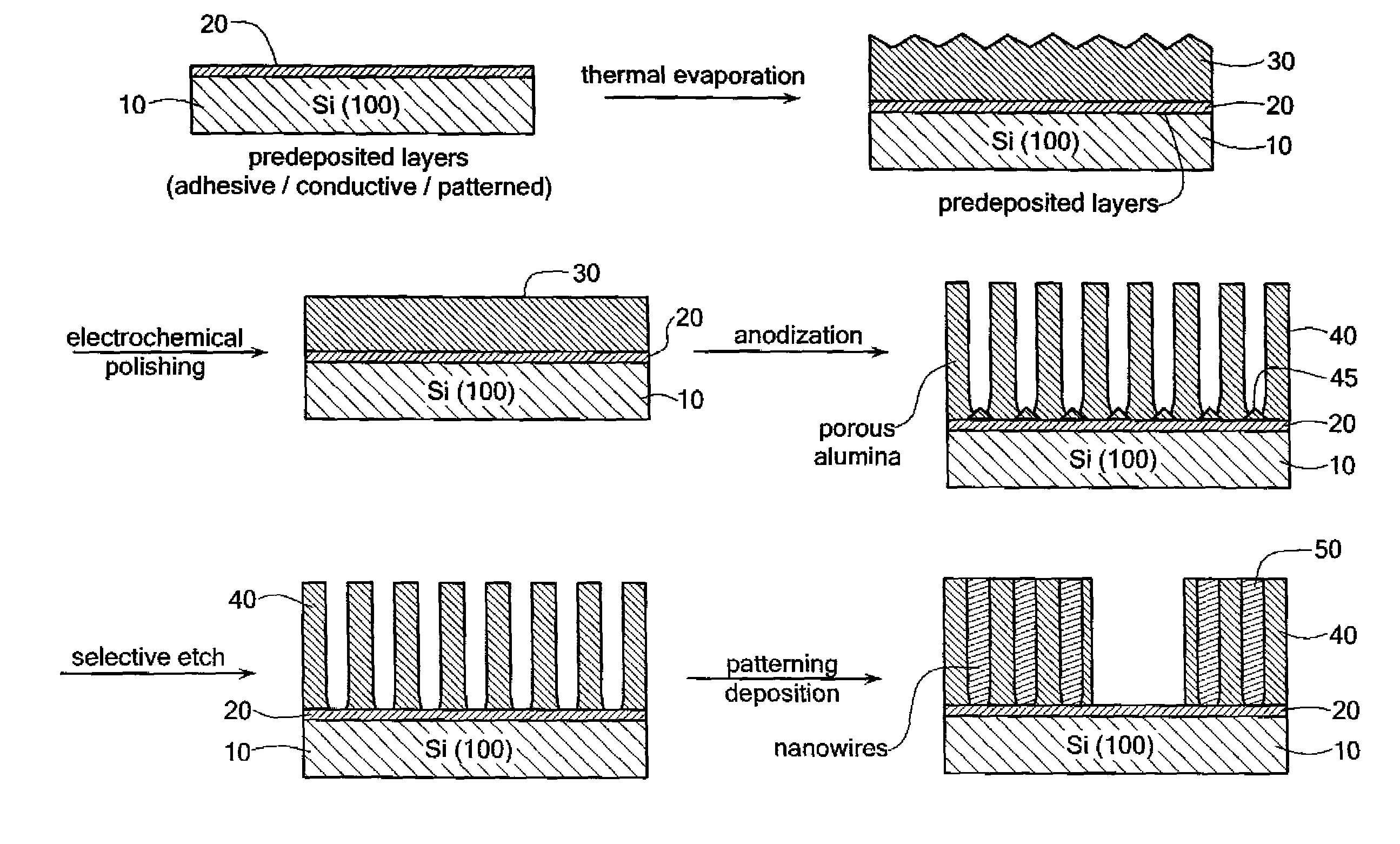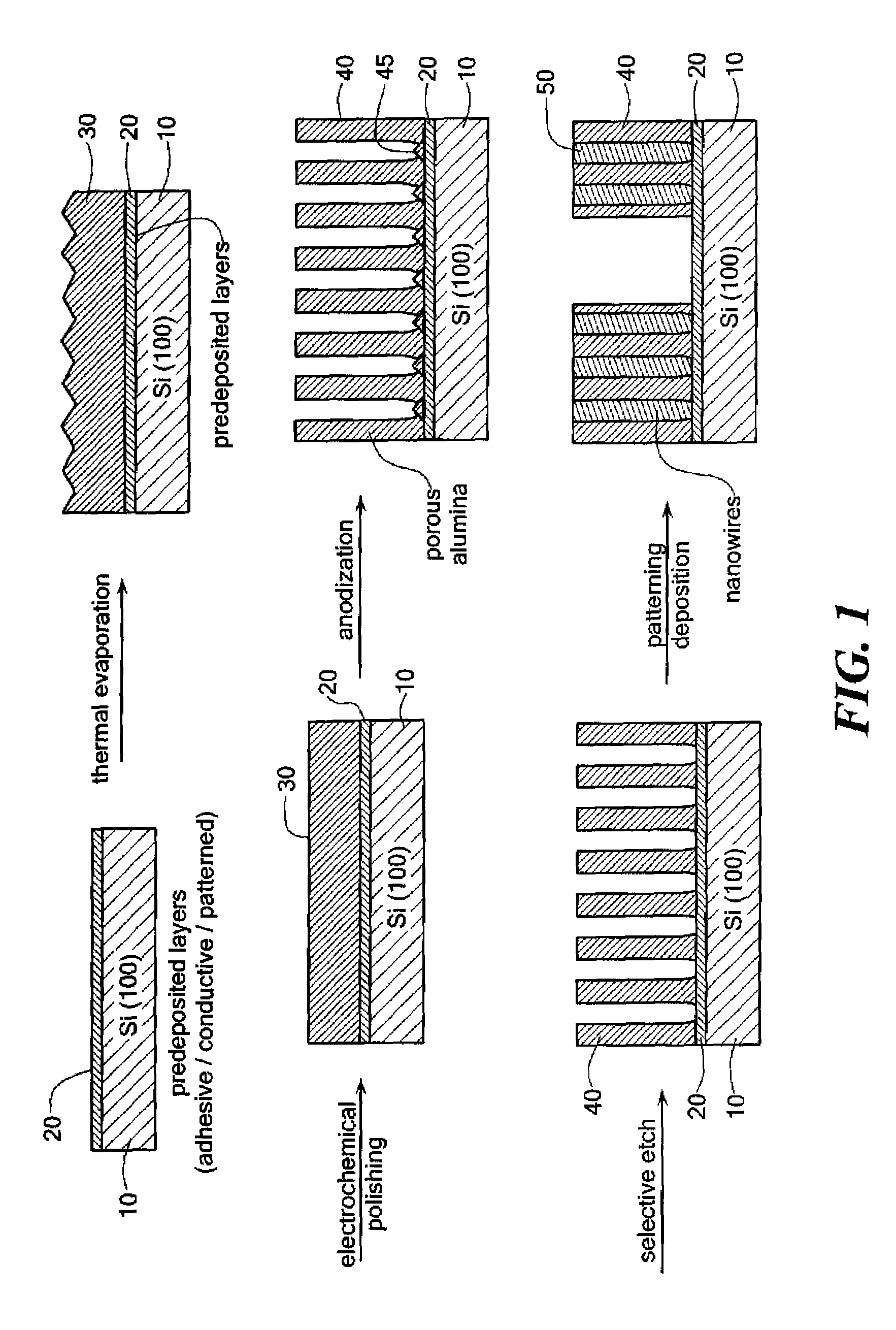Thick porous anodic alumina films and nanowire arrays grown on a solid substrate
a technology of porous anodic alumina and nanowire array, which is applied in the direction of crystal growth process, surface reaction electrolytic coating, metallic material coating process, etc., can solve the problems of limiting the active area of the film, limiting the use range of paa films, and affecting the stability of the film, etc., to achieve the effect of easy growth and more tractability
- Summary
- Abstract
- Description
- Claims
- Application Information
AI Technical Summary
Benefits of technology
Problems solved by technology
Method used
Image
Examples
Embodiment Construction
[0033]Porous anodic alumina (PAA) has received considerable attention as a template for the fabrication of nanostructures. The ordered triangular array of pores of high aspect ratio, whose dimensions can be accurately tuned by the process parameters, has made PAA a suitable host for the fabrication of nanowires of a wide range of materials. Applications of these arrays of nanowires include dense magnetic storage devices, field emission devices, thermoelectric devices, photovoltaic devices, nano-electrodes, sensing devices, photonic components and the study of low-dimensional quantum effects. Several researchers have used PAA as a mask for etching or deposition processes.
[0034]More recently, it was found that the optical properties of alumina together with the proper positioning of the voids in the film result in a 2-dimensional photonic crystal with a bandgap which can be controlled in the wavelength range of 520-600 nm (for certain polarizations and propagation directions of the li...
PUM
| Property | Measurement | Unit |
|---|---|---|
| thickness | aaaaa | aaaaa |
| thickness | aaaaa | aaaaa |
| surface roughness | aaaaa | aaaaa |
Abstract
Description
Claims
Application Information
 Login to View More
Login to View More - R&D
- Intellectual Property
- Life Sciences
- Materials
- Tech Scout
- Unparalleled Data Quality
- Higher Quality Content
- 60% Fewer Hallucinations
Browse by: Latest US Patents, China's latest patents, Technical Efficacy Thesaurus, Application Domain, Technology Topic, Popular Technical Reports.
© 2025 PatSnap. All rights reserved.Legal|Privacy policy|Modern Slavery Act Transparency Statement|Sitemap|About US| Contact US: help@patsnap.com



